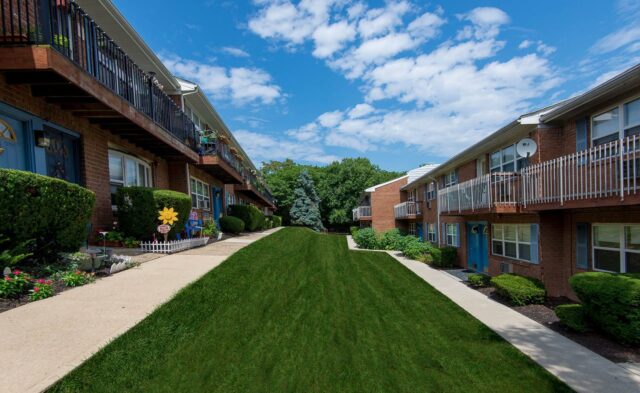Across the country, thousands of multifamily buildings built in the 1960s and 1970s are reaching the end of their useful life. If you’re a real estate investor, that matters a lot.
These properties often look like great value-add opportunities, but beneath the surface are expensive surprises such as outdated electrical systems, failing plumbing, worn-out roofs, and more. Understanding how these systems age and how to budget for them is critical to maintaining your returns.
Why Aging Properties Are Reaching a Tipping Point
Let’s do the math. A property built in 1960 is now 65 years old, and one built in 1970 is 55. That is well beyond the original design life of most of their major systems.
While these assets were built to simpler codes and often feature solid bones, every component eventually wears out. Investors who plan accordingly can turn these aging properties into reliable cash-flowing assets. Those who don’t can see their profits disappear in deferred maintenance.
1. Electrical Systems: Power Demand Has Tripled
Most apartments built in the 60s and 70s used 50–60-amp breaker panels. That worked fine when tenants had one TV and no dishwashers.
Today, even a small apartment might need 100–150 amps just to handle everyday appliances, HVAC units, and electronics. Larger units or townhomes may require 200 amps.
Investor takeaway:
Upgrading breaker boxes, outlets, and wiring is essential for safety, code compliance, and tenant satisfaction. Budget for electrical modernization in your CapEx plan.
2. Plumbing: The Silent Threat Inside the Walls
Old pipes are one of the most overlooked capital expenses in real estate. Over time, they develop scale buildup, pin-hole leaks, and pressure failures that can lead to costly water damage.
Here’s how long the most common materials typically last:
– PVC pipes can last about 25–40 years, though newer technology can extend that to 70 years or more.
– Copper pipes tend to last 70–80 years and remain one of the most common choices.
– Brass piping, an alloy of copper and zinc, can survive between 80–100 years.
– Galvanized steel pipes generally last 80–100 years, except for some poor-quality imports from the 1970s and 80s that failed early.
– Cast iron pipes also last about 80–100 years but are prone to rust.
– Polybutylene pipes, popular between the late 70s and mid-90s, often fail after just 10–15 years and should be avoided entirely.
– PEX plumbing is flexible and easy to install, but certain brands have faced class-action lawsuits due to product failures.
Investor takeaway:
If your property hasn’t been re-piped in decades, test sample units and budget for replacement. Prioritize brass, copper, or high-quality PVC systems when modernizing.

3. Fire Suppression: Compliance and Corrosion
Fire sprinklers are critical, but many older systems are at risk due to corrosion, mineral deposits, or freezing damage.
Per NFPA standards, systems require:
-
Annual inspections for leaks, corrosion, and valve failures
-
Five-year internal inspections of sprinkler piping
Investor takeaway:
Keep up with NFPA inspection schedules. Failure to maintain fire systems can lead to fines, insurance issues, and serious liability.
4. Appliances and Water Heaters: Hidden Turnover Costs
Even small items can add up fast. Water heaters typically last 8–10 years if maintained. Appliances usually last around 15 years. Garbage disposals have a lifespan of about 5 years.
Investor takeaway:
Track install dates and set replacement schedules. Proactive maintenance beats emergency replacements every time.
5. Carpeting, Linoleum, and Flooring
Flooring lifespan depends heavily on tenant behavior and turnover. Expect 5–10 years for carpet or linoleum in normal use. Heavy-turnover units will need replacements faster.
Pro tip: Longer-term tenants mean less wear and tear, which is another reason to invest in good property management.
6. Asphalt and Parking Lots
Asphalt expands and contracts with temperature swings, and heavy vehicles like garbage trucks destroy weak spots.
Plan to seal coat and crack seal every three years and repair drainage issues early to avoid full repaving.
7. Roofing and Gutters
Composition roofs typically last 20–40 years depending on materials and maintenance. Annual inspections, especially after storms, can prevent leaks and structural damage.
Building Your Reserve Fund: The Smart Investor’s Advantage
Depreciation may help you on paper, but real wealth protection comes from proper reserves.
My rule of thumb:
“Set aside 5–7% of your annual income for capital reserves. That fund is your safety net and your competitive advantage.”
With those reserves, you can handle repairs proactively, avoid emergency costs, and position your property for value-add upgrades.
Value-Add Strategy: Compete Without Overpaying
When you modernize old systems, replace roofing, and upgrade interiors, you effectively deliver a like-new property at a fraction of the cost of new construction.
That allows you to charge competitive rents, reduce vacancy, lower insurance premiums, and attract quality tenants.
This is the essence of smart investing: buying well, improving wisely, and holding long-term for cash flow and appreciation.
Final Thoughts
Aging multifamily properties aren’t something to fear. They are an opportunity for disciplined investors who plan ahead.
By upgrading key systems, maintaining inspections, and building reserves, you can turn mid-century properties into reliable performers in your portfolio.
The investors who ignore these fundamentals will face rising insurance costs, surprise expenses, and declining property values. The ones who prepare will thrive.



